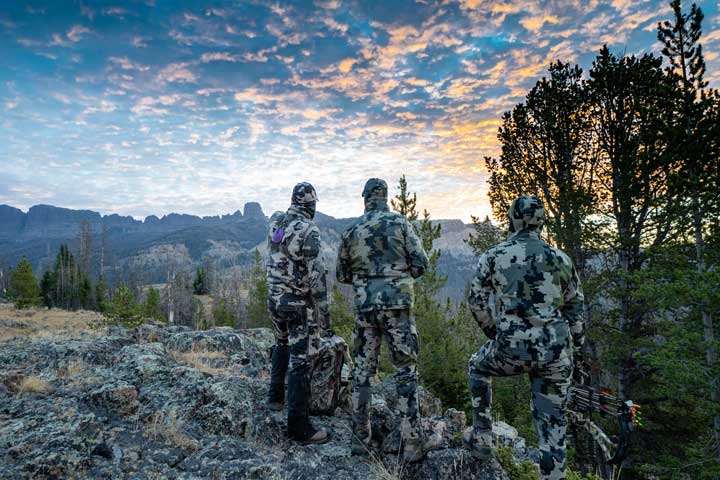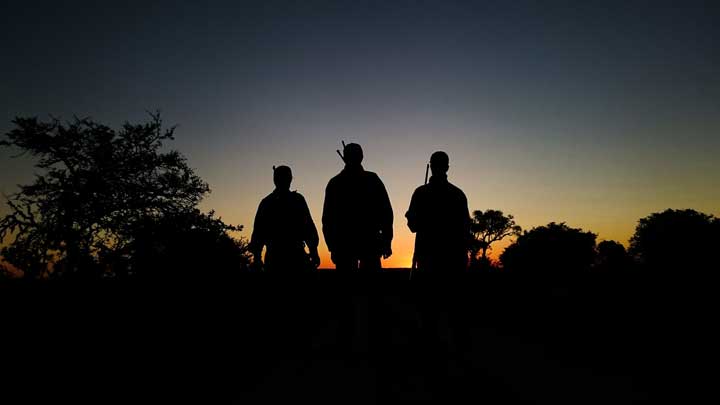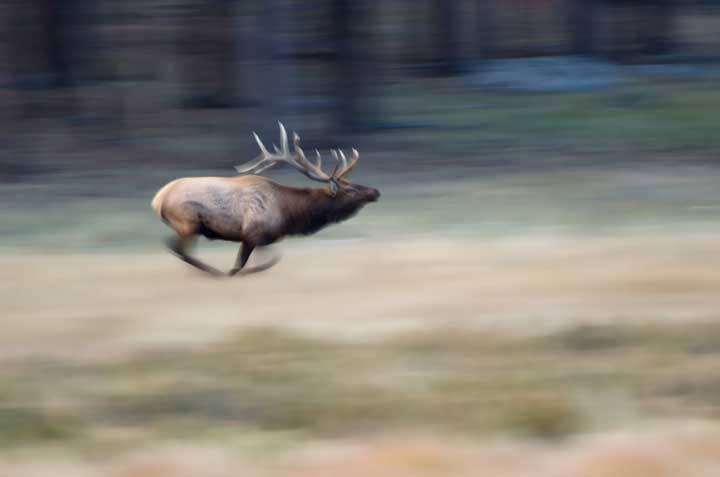It’s an old-age question: How do you call an elk? If you want to lure an elk, you need to understand the different elk sounds, what they mean, and how to imitate them.
In this post, I’ll tell you what various elk sounds are like and their meaning, why elk are so hard to hunt, and even the easiest elk calls to make.
How Do You Get an Elk to Come to You?

Elk are exceptionally vocal animals. They call each other to communicate various emotions, and depending on the season, each sound may mean many things. For instance, bulls bugle to mark their presence, attract mates, or locate other bulls. Bulls bugles are more common a few weeks before and after the rut season.
Besides season, how an elk sounds also varies depending on its age. For example, fully grown bulls bugle, while calves mew. That said, your best shot at getting an elk to come to you is imitating elk sounds the right way. Here are some of the main calls you should expect while hunting:
Bulls Bugle
The multi-tone sound of a bull bugle is one of the most recognizable elk sounds. It’s characterized by a low growl followed by a high-pitched scream that may last a few seconds. Bulls can bugle at any time, but the high-pitched scream is heard more often during the rut as a show of dominance.
They use it to attract mates and as a show of dominance. For instance, during the rut, bulls entering new territories bugle to alert other bulls of their presence. If there’s a dominant bull in the area, it’ll come charging when it hears the bugle. This is why the bull bugle is often the first answer you’ll get when you want to learn how to call an elk.
Estrus
This is the cow version of the bugle. It’s more high-pitched and is a cow’s way to tell the dominant bull it’s ready to mate, meaning you’ll only hear it during the rut. It’s sure to get elk to come to you.
Bull Glunking
A glunk is a deep-pitched sound made by bull elks during the rut season. It can be heard for miles, like bugles, bulls’ glunk to show dominance and attract mates. However, bull elk glunking is less common and is often heard during dominance contests when testosterone levels are raging.
Bull Chuckle
A bull chuckle sounds like a series of short, staccato grunts that resemble a chuckle. Although bulls can chuckle at any time, this sound is often heard at the end of a bugle. That means, just like bugling and glunking, bulls also chuckle to attract mates and display their dominance.
Chirp
This elk sound is made by bulls and cows and is often expected when the herd is together. Chirps are basically an elk language and are often a sign a herd is nearby when you’re hunting.
Bark
As the name implies, this elk sound is a single, high-pitched sound. Elk use it to alert the herd of danger; if you hear this while hunting, expect the herd to scamper away.

How Do You Call a Bull Elk?
In that light, when you spot a bull and want to have it charging in your direction, imitate a bugle, but make it strong.
The easiest way to call a bull elk is to trigger its strongest emotions: fighting and breeding. You may use a bugle call accompanied by a chuckle to stimulate its desire for a dominance contest or estrous sounds to lure it.
But this doesn’t mean all you need to do is bugle, and a bull will instantly come running your way. How you make the call is what determines your success. Here are tricks on how to call an elk to give you an idea of what to do to get a bull elk to come to you:
Combine Elk Calls and Natural Sounds
Besides being naturally vocal and noisy, elk make these unique cracking sounds when they walk and can be generally heard from a distance by you, other hunters, and elk herds. Also, their unique walking sounds are usually accompanied by natural sounds such as leaves rustling and twigs snapping.
So, when you make your calls, try to emulate these natural sounds to sound more like an elk. Otherwise, the target bull will get suspicious and won’t respond.
Follow the Bull’s Lead
If you manage to sound like an elk as described above, and the bull responds, don’t answer right away as this might make it (and its herd) suspicious. Stir some leaves and snap twigs to mimic movement, move a little closer, and wait. This will make the bull more curious about its rival, meaning there’s a higher chance it’ll come into sight for you to take the shot.
However, don’t rush the process. Follow the bull’s lead. If he’s curious and excited, maximize bugle calls and natural sounds to mimic another bull’s presence. If he is highly alert, don’t pressure him as this will only arouse suspicion.
Always Keep Your Elk Calls Ready
The chance for the perfect shot doesn’t come twice as elk tend to spook easily. As soon as a bull identifies the sound source and can’t find the bull or cow he’s been hearing, he’ll be suspicious and probably take to the hills.
Having your elk call ready at such instances makes all the difference since all you need to do is make a loud estrous scream or a bugle, and startle your target bull for a chance to take your shot.
What Does a Bull Chuckle Mean?
As noted, this elk call is often heard after bull bugles to state dominance. A series of short, sharp bull chuckles means he is ready to fight or challenge the rival bull.
Is it Hard to Call an Elk?
Yes, it is hard to call Elk. But, with a good grasp of different elk vocalizations, what they mean, knowing when is the best season to use them, and good gear, anyone can learn how to call an elk and master the art of elk-hunting.
How Do You Call the Elk during the Rut?
Even though there’s no single formula for calling elk during the rut, here are a few tips and tricks you can use to improve your chances of calling elk during the rut:
Hunting early or late into the Rut Season
For success in calling elk during the rut season, go elk hunting at the beginning or the end of the season, and not its peak. During the peak, cows are usually estrous, while bulls, both mature and young, are in high heat, meaning their full attention is on breeding.
As a result, any tricks you may use are likely to fail because the bulls aren’t interested in fighting, and they don’t need to look for mates since they’re easy to find. Nevertheless, at the start and end of the rut season, the bull elks are actively searching for mates and securing their territories, meaning they’re more alert and responsive.
Hunt in the Meadows During Morning Hours
Sometimes how to call an elk means going where the elk might be. That said, instead of going where every hunter is, go hunt in the meadow. This is where elk herds hide when spooked by the early morning hunters driving their trucks around with no regard for human-wildlife boundaries.
Wait Out Until Noon Hours to Call a Herd Bull
During early morning hours, elk are usually easy to spook, hence harder to hunt. This is generally due to all the chasing and pressure from other hunters during the rut season. The herd bull is typically even more vigilant since he’s trying to protect his herd.
In that light, for a better shot at calling in a herd bull, wait until 11 am to noon when the sun is warm, herds are well-fed and sleeping. There’s a better chance the herd bull will respond to your estrous calls since his herd is safe and resting, and probably no cows are interested in mating at this time.

Why are Elk So Hard to Hunt?
Elk are so hard to hunt because:
They Have a Great Sense of Smell and Sound
Elk might be noisy and clumsy, but they’re intelligent and can smell or hear you from as far as 100 yards away on average. That makes it virtually impossible to sneak on an elk unless you try extra measures like approaching it downwind, using a scent-eliminating spray, or wearing scent trapping apparel. As a result, the best possible hunting approach remains to utilize elk calls and maximizing the tips in this guide.
They’re Faster
Thanks to their large muscle mass, Elk can cover more ground per mile. They can also jump 14ft. off the ground, making them quite dangerous when they’re startled. Their surprising agility makes them even harder to hunt since it means you may have a perfect shot, but one wrong move may startle your target, causing it to run.
They’re Fewer
Even though elk are not endangered, they’re far fewer than hunting game such as deer. As a result, hunters have to spend more time trying to lure them instead of hunting. Some even go for weeks without ever sighting one. Luckily, that won’t be you because you now have insider tips and tricks on how to call an elk.

Can You Call in a Cow Elk?
Yes, you can call in a cow elk while hunting. As shown earlier, elk use an array of sounds to communicate, and cow elk is at the top of the list.
What is the Best Cow Elk Call?
Although there are many elk calls in the market, the Rocky Mountain Matriarch is the best elk call around. It has a wooden barrel to absorb sound for authentic, almost natural elk calls that’ll make hunting easier.
What Does a Lost Calf Elk Sound Like?
A lost calf makes loud, panicked mews, similar to a squeak. You can use cow elk to your advantage by mimicking the calls of a lost calf to raise cows’ curiosity. You’ll lure the cows into range and probably the herd bull, too, since he will likely follow to protect.
Do Bulls Elk Chirp?
Yes, bulls elk chirp. Chirping is how cows and bulls communicate when in herds. Although they essentially mean nothing, chirps tell you when a herd is nearby.
Do Cow Elk Respond to Cow Calls?
Yes, cow elk respond to cow calls.
What Is the Easiest Elk Call to Use?
As I’ve mentioned throughout the article, elk are highly vocal and use a wide array of sounds to communicate. For instance, the bull bugle is often accompanied by a chuckle to state dominance and attract mates.
That means if you’re to call an elk successfully, you’ll need to combine the two elk calls to sound like a real elk. In that light, there’s no one easiest elk call to use. It all depends on how authentic you sound and individual preferences.
Why Do Elk Hiss?
Elk usually hiss when approaching an opponent. The hissing sound is often referred to as an agonistic call since the elk agonizes over having another bull in its territory.
Why Do Elk Scream?
Elk scream as a way to establish dominance, locate other bulls, attract mates, and sometimes even call wandering cows. An elk’s scream is known as a bugle.
Summary
Elk might be hard to hunt, but that doesn’t mean the task is impossible. The secret is learning the different elk vocalizations and how they are used as well as when to use them. Hopefully, with this guide on how to call an elk, you can now lure them so they come to you.

